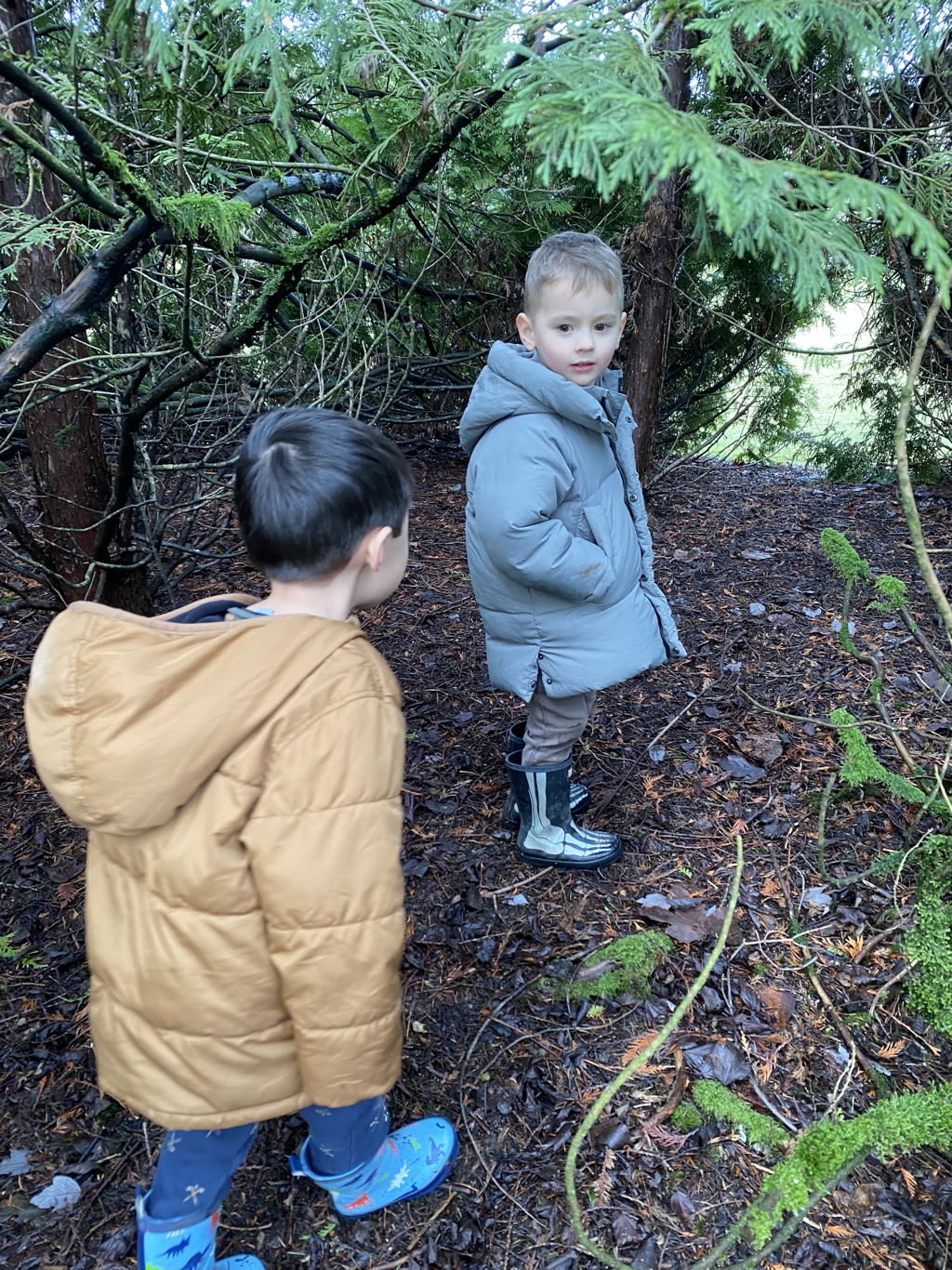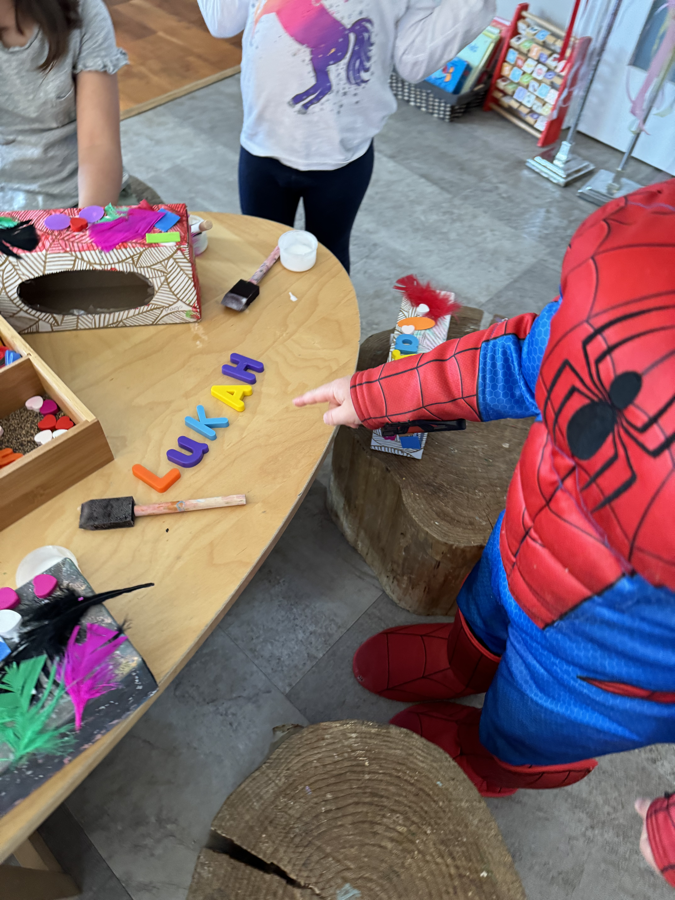|
The power of images to inform messages to our minds has been part of our learning experiences. Using images of hearts provide opportunities for our brains to dual code: store and consolidate new language in multiple ways. Nature has built into our brains the ability to see and interpret the visual so that's why we hear the saying a picture is worth a thousand worths! “This is me. I put the hearts in my tummy so I can grow.” - Brooks “These are windows with heart machines.” - Luna "There's lots of hearts for my mom and dad." - Fides “This is the world that made a world of hearts.” - Elie “These hearts are the different animals.” - Felix "This is a picture of me for my mom. She is going to be happy." - Vivaan On Mondays, we usually refer to children's reflections on what they've learned the most on the previous week. Fides brings us a very important part of the stories we've shared last week - "It's about the blind man". Children's reflections inform us to further planning on how we should go deeper with their interests. Our shared interests linger around the following questions.
The interest invites us to experience a role-play with a visually impaired situation to navigate around. When a sighted guide is required, an assistance for a friend to lend a hand has been voiced out. Through this role-play situational experiences, we encounter various emotions and ways to make 'trust' being visible. Does trust require communication? How do we communicate in ways that others are able to understand (without ambiguity)? The more we practice our conscious efforts, the more effortless our efforts may become. This is about building our awareness. Becoming more conscious in everyday life can also mean activating all of our senses to the fullest. We tune into listening to others' voices, hands, and movements during our navigations. The trust becomes stronger when we respond accordingly to build mutual understanding. Yoyo extends the above concept through his chain reaction experiment. It is a domino action with this fast moving when we start the action and watch the reaction. With an increasing cold weather around us, we discover a bucket in our backyard has collected a thick slab of ice. The first thing we do when we have it inside is to let our sense of touch to experience it. The skin sense of touch is what gives our brains a wealth of information about the natural environment including temperature, humidity, and air pressure. Felix associates his knowledge about an 'iceberg' with the ice inside the bucket. Most importantly, this sense of touch lets us feel physical pain - a necessity for avoiding injury and danger. Basically this means that it can sense right away when the skin is touching an object and when it stops touching that object. While noticing how the ice melts slowly and how slippery the surface becomes, we pose below questions during the experiment.
Elie contributes to the discussion that when her fingers touch ice, there is a transfer of heat. Hudson joins the experiment by discovering a toy car flips when it moves onto a slippery surface of ice. We attempt to consider what kind of struggles for the people when the commuting has become a challenging situation. Hudson makes a comparative description of the structures that he puts his effortful attempts to connect them. The connections between us and our kindness to our environment take place outdoors when we discover a 'cave' under a tree inside our front yard. Our collaborative efforts is shared with Luna, Elie, Brooks, Felix, and Hudson being active in painting and decorating stepping woods as well as trimming twigs. We place a few kindness rocks on the branches to create a beautiful space for us and others to share. Kindest,
Children & Friends.
0 Comments
|
No part of this publication may be reproduced, distributed, or transmitted in any form or by any means, including photocopying, recording or any other electronic or mechanical methods, without the prior written permission of the publisher.
Archives
July 2024
|


















